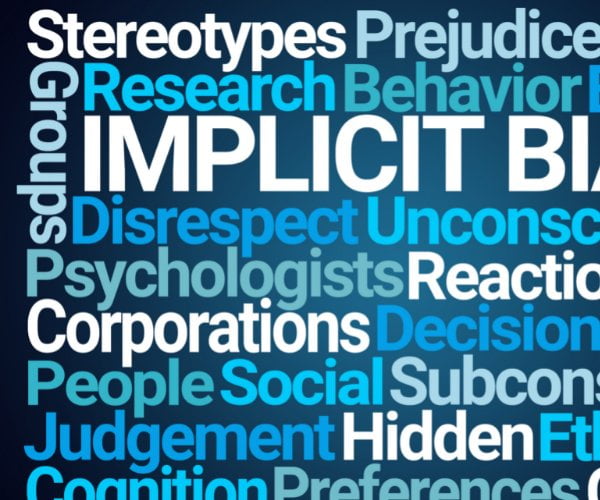
No matter how objective we may believe we are, we are subject to biases, which are prevalent forces in all of our lives and help us make day-to-day decisions. Noting the many types of biases and doing our best to be mindful of them makes us more informed and honest citizens when forming our own political opinions and making political decisions. There are lots of different biases out there–here are some of the most notable biases today below.
List of Political Biases
Cognitive Bias
Politicians and the media most often use cognitive biases to help manipulate public opinion and work election outcomes. Cognitive biases occur when people tend to interpret information based on their own experiences and personal preferences–in the political world, this can be extremely problematic and hinder our ability to empathize with people whose life experiences and realities are very different from our own. Three of the most common cognitive biases are known as the three “Big Cs”:
- confirmation bias
- coverage bias
- concision bias
Confirmation Bias
When one falls into the trap of confirmation bias, they tend to favor–or actively seek out–information that affirms their already existing beliefs. For example, a person who is politically conservative might only watch news stations like Fox, which tend to be more right-leaning and play into already preconceived beliefs held by conservatives. This bias plays into political polarization, as people tend to think what they believe is right instead of trying to listen and understand what all sides are saying on the matter, and it makes achieving bipartisan policy virtually impossible.
Coverage Bias
Coverage bias refers to the amount of “airtime” different issues get and are discussed. Issues, then, are oftentimes disproportionately covered. Different media outlets will emphasize issues and politicians differently depending on the audience. Media stations, like ABC, focused heavily on Donald Trump’s border policies–viewers were subjected to images and stories about kids “in cages”, whereas more conservative news stations would cover this in a completely different way, spinning it as either misrepresented media reporting from the left or that these border policies were a good thing. As we have seen, the opposite has happened with Biden, who, essentially, is doing the same thing but ABC isn’t reporting stories on the Border Crisis like Fox is. Often these stories appeal greatly to emotion, but not factual evidence. To overcome this bias, viewers should consider getting their information from a wide variety of sources.
Concision Bias
Concision bias is when politicians or news media companies focus on specific aspects of information–essentially pulling things out of context. Oftentimes we see this with soundbites and little clips from a larger speech. Decontextualizing specific instances in speeches is very dangerous and can polarize an already fragile political climate in America. It can remove more nuanced ideas, essentially shunning them from the political discourse. Being aware of this decontextualization can help us be more mindful of potential spin and can help us combat the adverse effects of concision bias.
Authority bias
Authority bias is another to look out for. We tend to be more likely to trust information that comes from people who take on an authoritative role; in government, this can come from our representatives, the executive, and even Supreme Court justices, as well as interest groups. These people have biases and agendas, and it’s important to be wary of what they’re saying!
Dunning-Kruger effect
The Dunning-Kruger effect occurs when knowing less about a given subject can sometimes make a person more confident and seem more credible. People, who for example, say that they don’t understand why we can’t just increase taxes to reduce the national debt, often sound like they know what they’re talking about. This is an extremely complicated issue that cannot be solved so simply, even if it may seem like it.
Availability Cascade
A political theory or idea that is mentioned once in a news story and from there spreads and gains credibility because of its availability would fall under the Availability Cascade. As the theory becomes more widely discussed, it becomes more believable and accepted, even if it lacks factual evidence or valid sources. This is an essential way that misinformation spreads and can be quite dangerous–it’s like a classic game of telephone in second grade but comes with real-world partisan consequences. Next time you hear something like “this political theory is right just because…” or “this politician said that this person said…” be wary of where this information is coming from. How credible are the sources, are their good facts associated?
Halo Effect
We should also be aware of the Halo Effect, which stems from our perception of other people. Our overall impression of a person can influence how we think and feel about their actions, policy, and character. An example of this bias would be when people write off politicians based on their demographics, economic status, how they look, the way they speak, etc.
Declinism
When we romanticize the past, miss the “good old days,” and think or talk about how society seems to be regressing, we often fall into the trap of Declinism. Intentionally or not, looking at the past without balanced eyes is dangerous to the well-being of our evolving democracy and even to our personal lives. For example, saying that a new bill undermines fundamental and historical American values while it seems to address issues that didn’t exist before may be worth considering, depending on the pros and cons of such a bill. Considering alternatives to the status quo should not be an issue. Nevertheless, we should be cautious and safeguard the constitution and freedoms that our democracy was founded upon, or else we won’t have one in the future. As long as changes enhance the idea and freedoms behind the constitution rather than take away, we should continue to be open to looking at new ideas.
The Framing Effect
The Framing Effect occurs when we draw conclusions about something based on how it was presented to us. One news station could frame an issue as being the fault of a senator, whereas a different station could frame the same issue on underlying causes from the previous president. Our own personal beliefs certainly play a role in synthesizing what we hear, but trying to better understand the issue and underlying framing can be a step in the right direction to overcome this bias.
Groupthink
Groupthink is a bias that many of us succumb to when working in groups. This happens when we conform to a popular group opinion or worldview in order to fit in so that we can minimize conflict. Our natural inclinations are not to be a black sheep. But simply voting democrat because your friends said you should even though you really consider yourself a conservative isn’t helping anyone. Be honest and true to your convictions, even if it means going against the grain.
False consensus
False consensus occurs when someone overestimates how many people ascribe to a certain idea or political leaning. Just because everyone you know is against abortion doesn’t mean that everyone else is. Being surrounded by people who share the same opinions does not make one the leading authority on public policy and opinion. While it may be the case that you and most of your acquaintances think the same way, it might not be the way many other Americans think, and being mindful of our differences is important and should be respected.
In today’s increasingly polarizing political climate, it is important to be aware of our biases and to actively work on overcoming them. Simply knowing that you have the capacity to be biased is the first step in combating this problem. Being respectful and acknowledging that people feel and experience life differently than you can lead to better political discussion, bipartisan policymaking, and a more conducive environment for democracy.






















